Kenny Stills Won’t Stop

I
Rain is on the horizon when Kenny Stills walks across the gravel parking lot to the entrance to the Bridge City Center for Youth on the banks of the Mississippi River, on a February day at the end of his RV trip across the South. Stills has stopped in more than a dozen cities, visiting museums, classrooms, women’s shelters, immigrant aid organizations, juvenile prisons, adult prisons and more, and this is the first stop in the final city he’ll see before driving back to Florida, his home, for now, as a wide receiver for the Miami Dolphins, with a year left on his contract.
Two dozen teenagers line the pews of the former nunnery converted into a juvenile detention center. Outside the church, life in the center can turn violent in an instant; last May eight boys were charged in two separate attacks on correctional officers, and another boy was charged with rape of a fellow inmate. The boys in the church are being rewarded for good behavior, with an opportunity to meet Stills, a former member of the Saints and one of the last players still taking a knee last season during the national anthem before NFL games.
“This part of your life, you’ve got to look at it as a book,” Stills says to a silent room flanked on all sides by correctional staff and administrators. “This can just be one chapter in your life. It doesn’t have to be the whole book. Making a bad decision, that’s just one decision, but if you do it over and over again there’s no growth. If you can move forward, there’s an opportunity for you to grow and change.”
He cuts his remarks short after just four minutes. “I’m 26,” Stills continues, “an athlete, and I don’t know everything. I’d like to learn from you.”
Later, Stills will walk into a very different room filled with juvenile offenders at a different location. At a processing facility for teens awaiting trial, boys in cell blocks stare glassy-eyed at him, asking questions only about what it’s like to play in the NFL. Here, boys who disturbed classrooms and wound up in handcuffs are housed with accused murderers, and no one’s in the mood to chat. For Stills, the tour is about finding truth, and solutions, but he leaves the processing facility with more questions than answers. “I wish we could do a better job of understanding what we’re doing to kids, because it can be better,” he says. “It’s unfair to give up on these young black kids. We don’t do that to white kids.”
But at Bridge City, an earnest administrator encourages the boys to stand up and deliver their questions for Kenny, and they do so, for more than half an hour. A white boy stands and offers a question that sticks with Kenny for the rest of the day. Wearing khakis and a green polo, he pats his open palm with a closed fist. “When you get out of a situation like this,” he says, gesturing to the walls around him, “and you’re going against the stigma, how do you beat that? It’s a big system.”
Good question, Kenny says. It’s something like the question Stills has been trying to answer for three years: How do you get perfect strangers to accept your version of yourself?
II
From 2004 to 2008, as first sergeant and protocol officer in Golf Company, 2nd Battalion, 23rd Regiment, 4th Marine Division, it was Joe Mascarenaz’s job to meet the bodies of the fallen at John Wayne International Airport in Santa Ana, Calif. They were primarily soldiers from Orange County, whose remains had made the long flight from a coalition airbase in Iraq or Afghanistan. Those were the bad years—in Iraq alone more than 800 American soldiers died each year from 2004 to 2007, the deadliest four-year span in the war.
Mascarenaz was a football coach in his free time, and remains one. But during work hours he greeted the fallen. He was the first man to step inside the cargo hold to inspect the bodies. He’d open the caskets and compare the Marine in question to his photograph. If the faces were burned or otherwise unrecognizable, he compared tattoos and known scars. He’d make sure the uniform was in order, and ensure the marine had the proper commendations pinned to his service jacket.
By that time, the next of kin had already been notified. Mascarenaz’s phone would ring at 3 a.m. Pacific on days when an area family was next in line to hear the grim news. The call came from an East Coast base that opened at 6 a.m. Joe and the Marine on the other end spoke so often they got to be friendly. He’d meet with his admin chief and collect the deceased Marine’s service record, then confirm the address of the next of kin. Together they’d drive to Yorba Linda or Mission Viejo or Garden Grove to deliver the news. Some folks invited them inside. Others wanted to hear the bad news at the doorstep. All of them cried.
Once the body arrived, Mascarenaz’s group escorted it to the funeral home, standing guard until the Marine was laid to rest. But that wasn’t always the end of the job. There were families who stayed in touch with Mascarenaz for days, weeks, sometimes years. They had trouble letting go, Mascarenaz thought, and he was a little piece of the Marine’s life and legacy they clung to. The last thing Mascarenaz did for a fallen Marine in any official capacity was fold the flag that had been draped over the casket, presenting it to a widow or a mother or a father.
“I don’t think the common person understands,” Mascarenaz says. “It has a deep meaning.”
So that’s where Mascarenaz’s mind went when Kenny Stills called him the Friday before the Dolphins’ 2016 season opener to discuss Still’s intention to protest during the national anthem, taking a knee before a sprawling Stars and Stripes, as 49ers quarterback Colin Kaepernick had done.
Mascarenaz was one of a handful of people Stills wanted to consult with before he went ahead with the gesture. Mascarenaz’s son, Joe. Jr., became fast friends with Kenny when they were 7-year-olds in Oceanside, Ca. They played Pop Warner football together until they were 14, coached by a group of Marines led by Joe Sr., and they acted like it. When the team raised enough money to play in the Pop Warner national championships at Disney World in Florida when the boys were 9, the organizers were so astounded at their comportment that they wrote a letter of praise to the coaches. The Oceanside Pop Warner team walked everywhere in two uniform lines, they said “yes, sir” and “no, sir,” and they spoke in hushed voices compared to their shrieking peers from across the country.
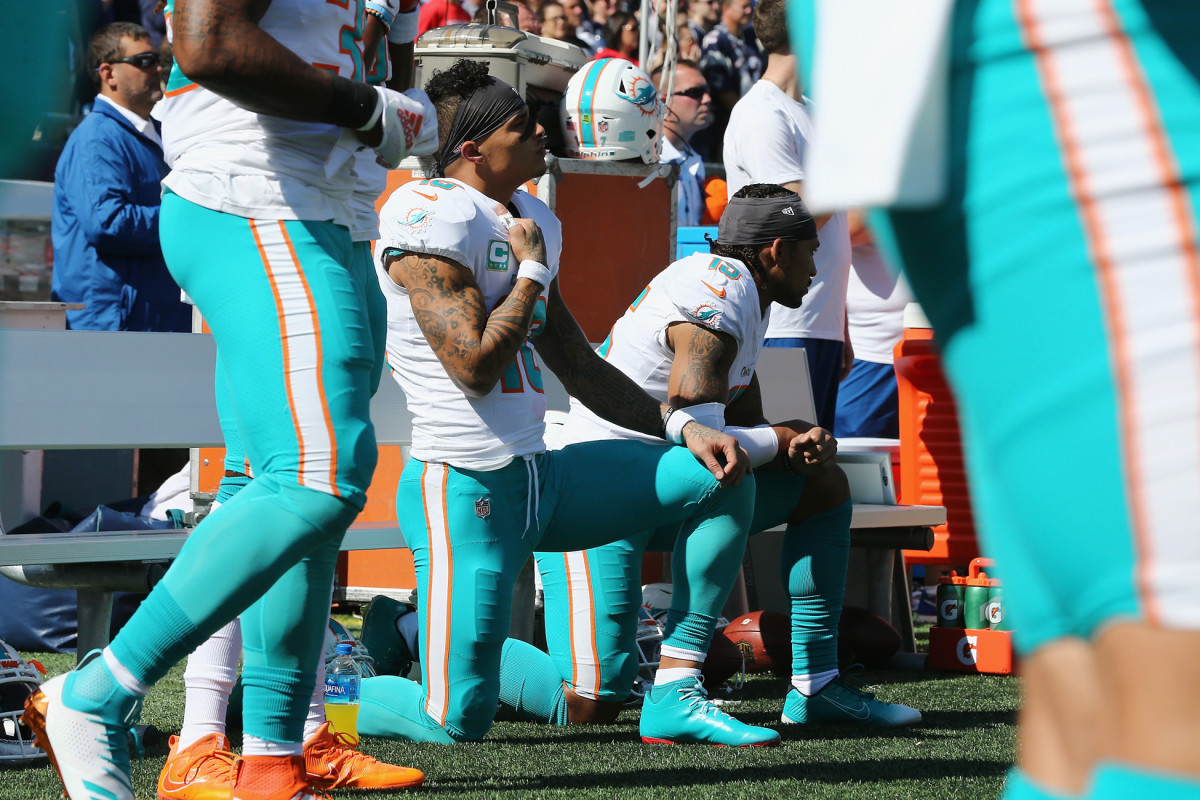
“Everything we did was like we were in the Marines,” Stills says. “We didn’t know any different. We did what Coach Joe told us to do. My mom was always on me about my grades and everything, but all of our discipline and hard work came from him.”
Mascarenaz begins to tear up when he talks about Stills. It’s love, worry, admiration and anguish, all barging in at once. “Excuse me,” Joe Sr. says, “When I talk about Kenny I get emotional. I love him like I love my own son and daughter.” Stills’s father, former NFL defensive back Ken Stills, didn’t then have a relationship with his son during Kenny’s childhood. Kenny spent weekends at the Mascarenaz home as a boy. When the Mascarenazes visited family or went on vacation, Kenny was invited. To this day, Joe Sr. prays for Stills every night before he goes to bed. Stills was part of the family, and this was a family that was proud of its military service. Mascarenaz’s father and uncles all were in the armed forces. Stills wanted to see if he could convince Joe Sr. that his protest during the anthem, in the presence of the flag, was not a protest against the military.
Mascarenaz would have none of it.
“I asked him to not take a knee,” Mascarenaz says. “Kenny’s grandfather was a Marine, and I told him, ‘Remember, your grandfather wore that uniform. I wore that uniform. Your coaches have worn that uniform. People are dying in Afghanistan and Iraq. Don’t disrespect them.’ ”
III
It was the Terence Crutcher video that turned a protest into a vocation for Kenny Stills. He first knelt on Sept 11, 2016. He explained himself on Twitter on Sept. 13. Then on Sept. 19, Tulsa, Okla., police released dashcam and aerial video of a Sept. 16 incident in which Crutcher, an unarmed 40-year-old black male, was shot to death by a white female police officer while he raised his hands above his head and walked toward his vehicle. Stills was driving to the Dolphins facility in Davie, Fla., as the video started going viral. He brought his car to rest at a stoplight and watched the big man in the white t-shirt go down in a heap. A police officer narrating from a helicopter described Crutcher as having the appearance of a “bad dude.” Stills pulled his car to the side of the road and cried.
He’d been inspired to protest by a string of highly publicized police shootings of unarmed black men across the U.S., but he hadn’t educated himself much in the larger realm of social justice. His family never talked politics growing up, and it wasn’t until 2016 that Stills decided on a political party. “We literally never talked about politics,” Kenny says of his childhood. “I talked about football and school, and that’s it.”
He posted a picture of President Barack Obama to his Instagram page after the 2012 election, but he didn’t know much about Obama’s policies: “I was just happy we had a black president.
“Growing up in California, there was racism, but the white people we had around us were cool. We knew the Ku Klux Klan still existed in Fallbrook, the farming area, but they were a joke. We felt racism was behind us.”
He sought out books, lectures and videos on the topic of race relations: The New Jim Crow: Mass Incarceration in the Age of Colorblindness, by Michelle Alexander; Across That Bridge: A Vision for Change and the Future of America, and Walking With the Wind: A Memoir of the Movement, both by John Lewis; The Mis-Education of the Negro, by Carter G. Woodson; Defining Moments in Black History: Reading Between the Lies, by Dick Gregory; The Souls of Black Folk, by W. E. B. Du Bois; The Fire Next Time, by James Baldwin; Tears We Cannot Stop, by Michael Eric Dyson; Between the World and Me, by Ta-Nehisi Coates.
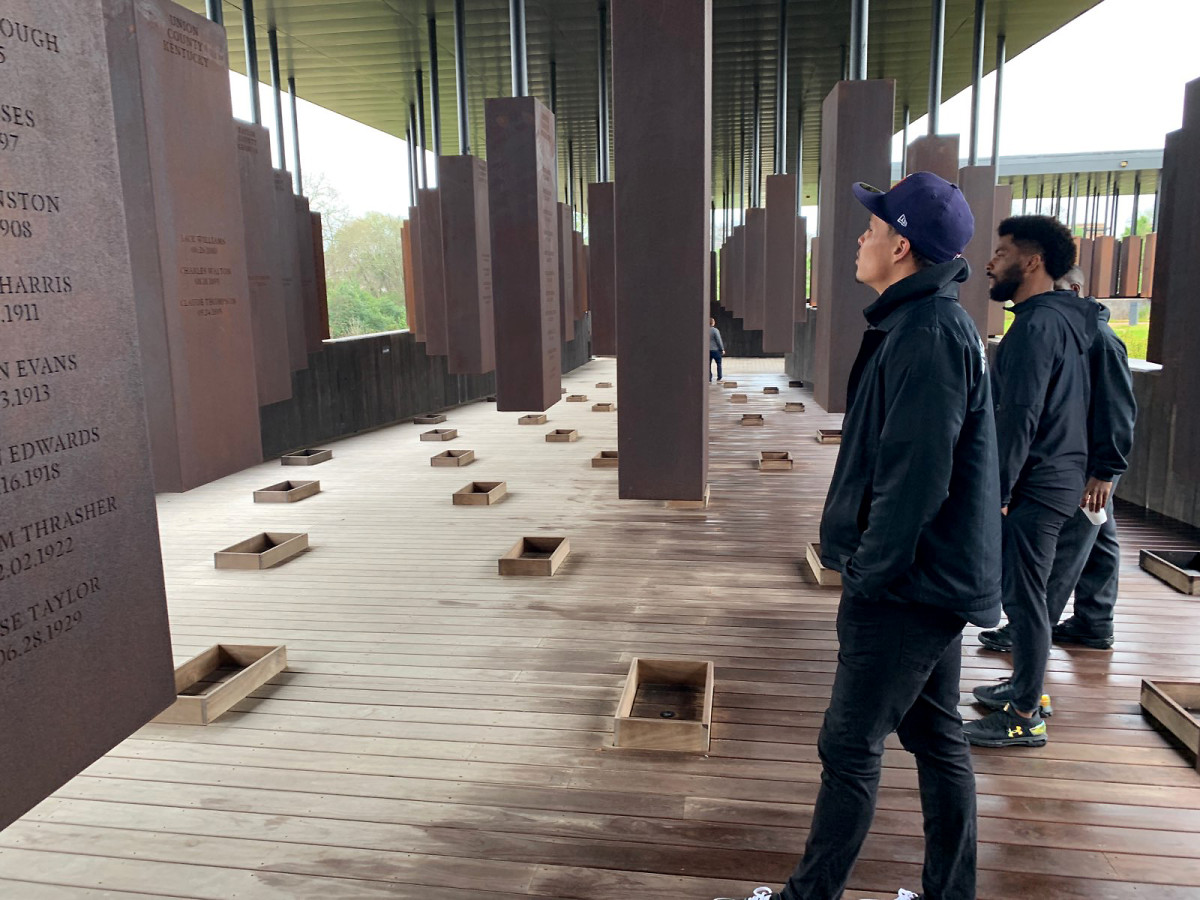
He watched an hour-long lecture by Dr. Joy DeGruy on what she called “Post Traumatic Slave Syndrome.” He listened to the work of Tim Wise, an activist who speaks on college campuses and with corporations on fighting racism. He watched Morgan Freeman’s National Geographic series, The Story of Us. He watched Noam Chomsky’s documentary on American wealth distribution, Requiem for the American Dream. He watched Ava DuVernay’s examination of incarceration, the Netflix documentary, 13th.
“13th turned the light bulb on,” Stills says.
Before the Crutcher video, and before his cultural immersion, he had given police and the system at large the benefit of the doubt. It had worked for him. He’d made it to the NFL; he had no reason to doubt it would work for anyone and everyone who was honest and worked hard and followed the rules. Then 2016 came.
“I feel like I’m a reasonable person,” Stills says. “Cops are scared. I would hear about a shooting and think, This person made too many moves, not listening, resisting. The more I started to see people being brutally murdered, I’m like, what the f---. This isn’t out of fear; this is you not valuing black lives. Then you see these white school shooters brought in alive, and it doesn’t add up.
“I watched that Oklahoma shooting and I thought, What could I do if that was a family member or a friend? The answer was, nothing. I just knew I had to do something because I felt like I hadn’t done anything.”
IV
Helplessness sneaks up on you. It’s never part of the plan. One day you’re five years old, and all you know are basic rules. Pay attention in school. Be kind. The police are here to help you when something bad happens. You can play outside as long as you like, but you’ve got to be back before dark.
One day you walk inside your home during a playful afternoon and go to your mom’s room. She’s in bed with a man who has all his clothes on, and she’s clothed too. You hop in. You’ve never seen him before, and he tells your mom to kick you out of the room. She does, and you go, but something doesn’t feel right.
“I knew about the police, knew about 911,” Kenny says. “But I didn’t know if this was one of those situations. I’m sitting outside the door and like, What do I do? Something feels wrong. I will never forget being young and knowing something was wrong and not knowing what to do.”
Kenny went back outside and kept playing, returning when day turned to night. He knocked on the door of his house and no one answered. That was enough. He ran around the block to a trusted neighbor and explained the situation as best a five-year-old could. The neighbor called the police.
Years later, he realized that his mother, Annette Delao, struggled with alcohol for much of his childhood. She eventually told him she was raped that day when he was five, and it wasn’t the only time she’d been sexually assaulted. Who could blame Kenny for thinking about his father then? What if he’d been there to protect them? Why wasn’t he?
Kenny has told some version of that story to women’s groups and children from abusive homes across the South. He and his listeners spoke about fighting out of that feeling of helplessness, taking back the power over one’s personal journey, writing your own life story, taking stock of what’s important and salvageable. It was an emotion he came to naturally, before the protest and the re-education. When the Saints traded Stills to the Dolphins after his second NFL season, and football began to feel temporary, he reached out to his estranged dad through a Father’s Day card. He wrote that he didn’t hold any grudges, that he believes people are all learning and growing. He wrote that he wanted to have a relationship.
They have one now, Stills says: “We’re a work in progress.”
V
The NFL can be a lonely place. Stills got his first taste of that before he was ever drafted or signed a contract. It was late February 2013, at the NFL scouting combine in Indianapolis. Teams have 15 minutes to get to know you, or grill you, before you move on to the next coaching staff and they move on to the next prospect. Teams had plenty to talk about with Kenny: There was his college DUI, his decision to forgo his fourth and final year of eligibility, and his famous dad, former safety for the Packers and Vikings.
But one team dug deeper. They’d been through all of his Facebook photos. One night during college he and a girlfriend were joking around, and he put on one of her dresses. She took a picture and tagged him in it. So the team came right out and asked: “Are you gay?”
No, Stills said, he wasn’t. But what if he had been? Would that have made him undraftable? In what universe would a 15-minute meeting with a group of strangers be the opportune time to come out? For Stills, the NFL represents a lot of great things—a path to prosperity, an outlet for his competitive nature, an opportunity to build a legacy—but he learned one thing in Indy: It’s hell on outsiders.
So it was no surprise to Stills that folks at every level of his personal football hierarchy tried to convince him to abandon or delay his protest. From his agent to his position coach to his offensive coordinator to his head coach to the general manager to the owner—everyone discouraged him.
“When I did this it was me, [then-Dolphins running back] Arian Foster, the guys I had around me, and my girl,” Stills says. “Mostly everybody told me not to do it or to just wait ’til I got my money. I was out there for a while.”
And when he decided to go on a second annual community service road trip through the South, he didn’t expect anyone to come along besides his closest friend, Mike Hodges. So it was a pleasant surprise when quarterback Ryan Tannehill decided to join him on a trip to Nashville to visit with Free Hearts, an organization that supports children of incarcerated mothers. There they met with Keeda Haynes, a public defender who spent four years in a federal prison in West Virginia on a marijuana distribution charge.
“They were really open to everything we were seeing,” Haynes says of the players. “They really wanted to know what was going on, and really seemed invested in the whole criminal justice reform arena. I support what Kenny and others are doing because there needs to be criminal justice reform. We need to talk about mass incarceration. We need to talk about how the justice system disproportionately affects black and brown people. We need to talk about policing.”
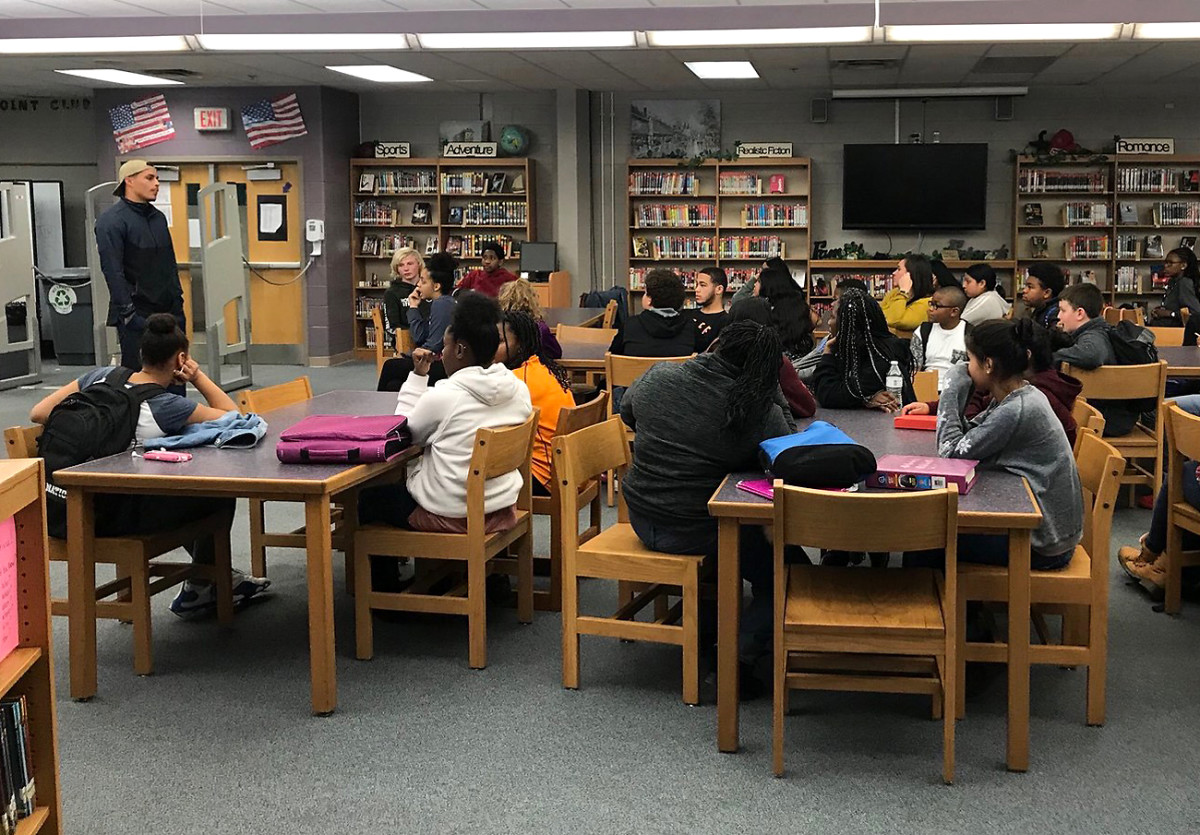
What changed more than anything in Year 2 of Stills’s tour was the topic of conversation. In Year 1 it had been about the protest. Kaepernick was front of mind, and Stills was an ambassador for the cause, so that’s what folks wanted to discuss. Now it’s about the issues, about activism and social work, and the mental toll such work takes on those engaged in it.
In Graham, N.C., Stills and Hodges visited Benevolence Farm, a facility that works to re-integrate newly released female inmates into public life. Later they talked with local activists about the large ICE presence in the area, and the massive Confederate statue posted at the center of town. In Montgomery, Ala., they visited the National Memorial for Peace and Justice and walked among the swinging monuments representing lynched African-Americans. Says Stills: “We haven’t been honest about the damage we’ve done as a country.”
In Birmingham they heard Dr. Angela Davis speak at Boutwell Auditorium, and in Lexington, Ky., they met a Frederick Douglass High class that broke into a debate between a white female student and a black male student about community relationships with police officers.
“I started to smirk a little bit at that,” Hodges says. “Year 2. Now we’re finally getting somewhere. But the teachers didn’t want that [debate] to happen, and they shut it down.”
At most stops, Stills talked with social workers and activists about the difficulty of the job. He shared literature on meditation, and discussed ways he copes with the stress of, frankly, caring so much.
“A lot of people don’t realize the toll put on activists,” Stills says. “There’s a very draining element to it.”
VI
When Joe Mascarenaz Jr. and Kenny Stills were beyond the gaze of Mr. and Mrs. Mascarenaz, they weren’t the model citizens those Disney World bosses wrote about. “Kenny never got into any trouble with the law,” Joe Sr. says. “But they used to do things like hide in bushes and throw rocks at cars.”
Kenny was easily the most gifted kid on the football team—so much so that coaches insisted he play quarterback, though he didn’t want to, so he’d touch the ball on every play. In Kenny, Mascarenaz saw a tremendous athlete with questionable dedication. A former high school basketball player who says he threw away his opportunity to play college ball with a “dumb mistake,” Mascarenaz couldn’t stand to see Kenny go down the same path.
One day, toward the end of Kenny’s Pop Warner career, before his mother moved him to another school, away from the district where Joe Jr. would attend high school, Joe Sr. sat Kenny down and bared his soul. Kenny remembers being taken aback by this hulking Marine weeping in front of him.
“He started doing things he shouldn’t have been doing,” Mascarenaz says. “He stayed out a bit late, not working the way I wanted him to work. I said, ‘God gave you this gift, and this is a ticket to a better life for you and your mother.’ And I think when he got into high school he started understanding what he could possibly have if he put the work in. His mother sending him there was a good call. I think he needed to get out of the area.”
Joe Jr. wound up playing baseball for La Sierra University in Riverside, Ca. The Mascarenaz family and the Stills family remained close. They saw him play at Oklahoma, and when he made it to the NFL they’d often watch games at Stills’ mother’s place. Joe Sr. went to Annette’s watch party for the Dolphins’ 2016 season opener. Mascarenaz was still in his car when the national anthem was broadcast. He arrived in time to see a replay of Kenny kneeling, hand across his heart, the way Kaepernick had done in an effort to show respect for the flag and the service members in attendance during his protest. (Kaepernick had begun his protest by simply sitting on the bench in preseason games, before a conversation with former Green Beret and NFL player Nate Boyer, who persuaded him to kneel.)
Everybody at Annette’s house looked to Mascarenaz for a reaction. Few attendees knew that he and Stills had talked two days earlier. But that did nothing to stifle his anger. He didn’t say anything, though, until he got home.
“It wasn’t my house, so I kept my mouth shut, but I didn’t like it at all,” Mascarenaz says. “When we got home, my wife sat me down and said, ‘He’s gonna do what he’s gonna do, and he talked to you about not disrespecting servicemen and women.’ Once she talked me out of my anger, I was like, ‘You’re right. He’s not trying to disrespect the flag or servicemen and women or first responders.’“
That’s what Stills had told him when Mascarenaz brought up Stills’ grandfather during their talk. Kenny said it was a protest against police brutality and social injustice. He said it was because of the sacrifice of those who’d fought for the country that he had the right to do so.
Mascarenaz understood, but he’d had a different experience—in Desert Storm, at John Wayne International greeting the dead, at cemeteries across Southern California, folding the flag Stills now knelt before. He wanted Stills to find a different way, but Stills didn’t, and Mascarenaz still loved him, still supported him.
Then the texts started coming in—sergeants, captains, lieutenant colonels, colonels—all of them texting Mascarenaz about his former pupil. They’d become Stills fans over the years because they were friends with Mascarenaz and knew he coached him, and now they felt angry and betrayed. One told Mascarenaz that he’d practically raised Stills, and thought Mascarenaz would have raised him better. They said they were canceling their NFL packages and boycotting the NFL.
“In the very beginning it was really bad,” Mascarenaz says. “I told them Kenny did talk to me about what he was going to do, and I’ve explained to them many times this is not about disrespecting the flag or servicemen and women. But a lot of people just won’t believe that.”
VII
Much as he describes his relationship with his father, Stills considers himself incomplete. When he speaks to groups across the country, he does not have prepared remarks. He talks for a few minutes about himself and his journey—just enough to relate to the audience and introduce himself to those who don’t know his story—then he cedes the floor. He takes questions, has conversations. He says he wants to learn something from the boys in the church in the detention center, because he’s still a work in progress.
That’s how he views the people in his orbit, too. Kaepernick’s detractors have often dismissed his cause over things he’s done that they see as naive or extreme. At a 49ers practice in August 2016, for instance, Kaepernick was pictured wearing socks featuring pig faces with police hats. Can Stills see why that turns people off to the quarterback’s actions?
“If police are upset about an individual wearing pig socks, they need to understand why those socks exist in the first place,” Stills says. “If you were terrorizing our communities and not protecting and serving, you got labeled a pig. And if you aren’t that type of person, those type of things should not affect you.
“I don’t justify [Kaepernick wearing the socks], but I do understand why people in our communities feel that way about police officers. That’s his choice. That’s not the decision I would have made. But that comes with personal growth. There’s a time in my life where I probably would have worn those socks because that’s how I felt, but I know now that isn’t going to do anything to further my cause.”
The cause is what Stills prioritizes now, above all else. Hence his commitment to the protest a year away from his own free agency; hence the careful, calculated way he talks about activism in the NFL. He’s largely alone in his specific efforts to influence change because he is still protesting after most of the league has given up the gesture. Malcolm Jenkins, Chris Long and a group of NFL players who were once in solidarity with Kaepernick—and by extension, Stills—have moved on. NFL owners wrote a check, and those players have used the money to benefit programs across the country that further their activist goals. Kenny isn’t part of the Players Coalition because he believes it abandoned the man who started the movement. Colin Kaepernick, after all, remains unemployed.
“I think the work Malcolm and the Players Coalition is doing is going to be impactful,” Kenny says, pausing between sentences to consider his words. “But my disagreement with them, and the reason I can’t be a part of that work, is this decision the coalition made to move on in negotiations with the league without addressing or speaking on behalf of Colin and players.
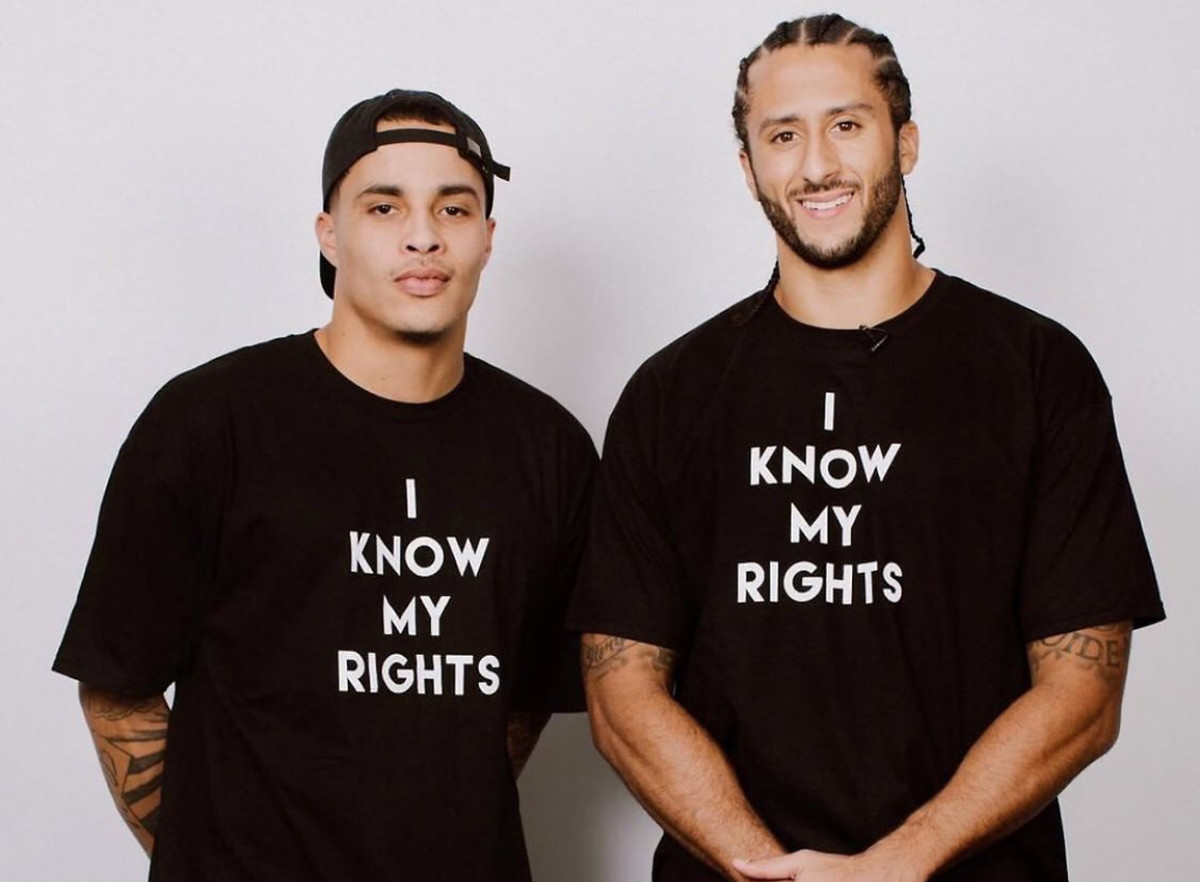
“I thought they did a bad job of understanding the correlation between blackballing a player for bringing attention to an important issue in our country, and the social justice space we’re fighting for. That falls underneath that umbrella, and they didn’t see the connection. That was confusing and contradictory for me, that they wanted to accept money from the league while the league was blackballing the guy who started all of this in the first place. We talk about football being family, and then when something wrong happens to one of our brothers, we don’t do or say anything about it?”
So Stills will keep protesting, even if it means jeopardizing his place in the NFL, this thing he fought his entire life to achieve. Back in Oceanside, a former Pop Warner coach will live with it. “It would be hard for me to accept,” Mascarenaz says, “but if Kenny is good with it, I support him. What I’m proud of is that he’s backing up his talk with action. He’s in these communities, working for change. I hope the NFL owners see that. I respect the hell out of what he does.”
And Stills? He wants to play, and if, down the road, some team would have him play if he’d only drop the protest, he’ll want to know why.
“I’d ask them what their reasoning is, and do my part to help educate them on the work I’m doing and why it’s important,” Still says. “I’m more encouraged and inspired than ever. We’re not asking for anything more than equal opportunity. Like Angela Davis said, black people have been doing this work for a long time, and we’re not going to stop.”
To the boy’s question about fighting stigmas, about making the world accept your version of yourself, Stills says, “If you continue to just do the right things every day, consistently, every day, you can break that.”
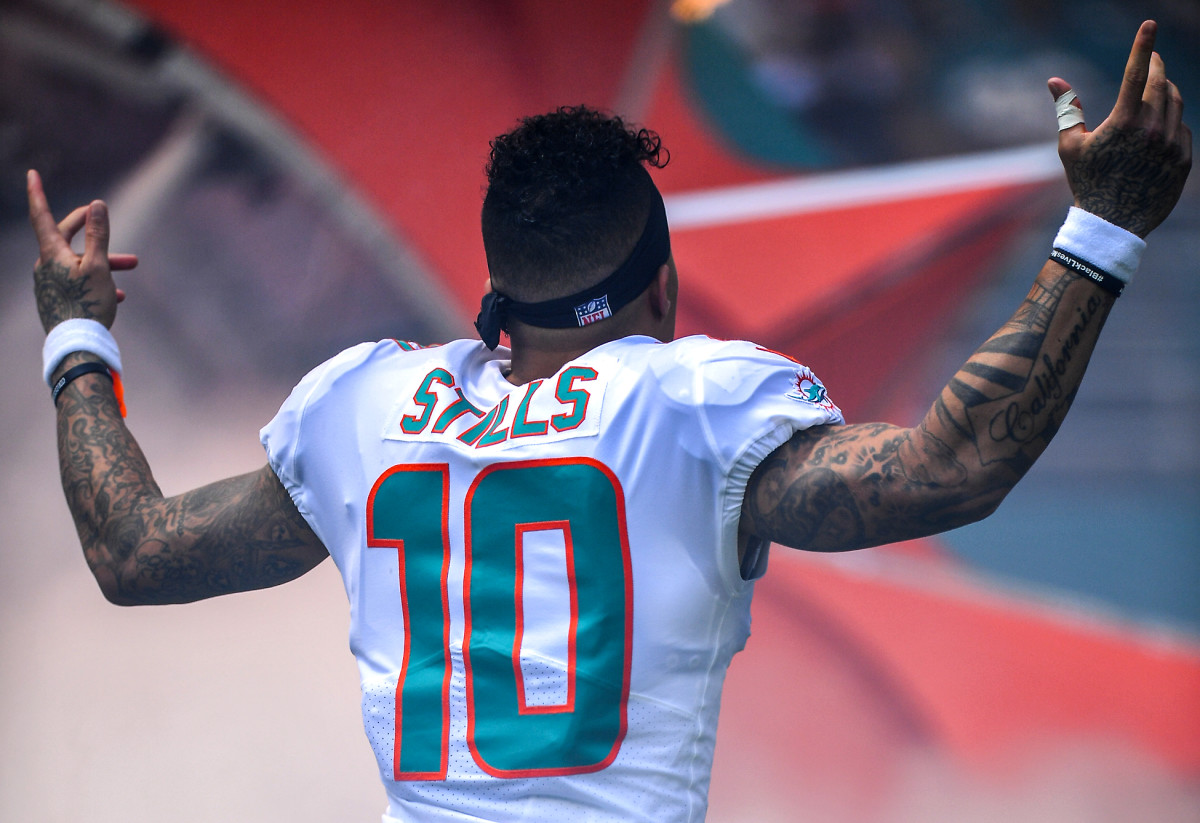
Question or comment? Email us at talkback@themmqb.com.
